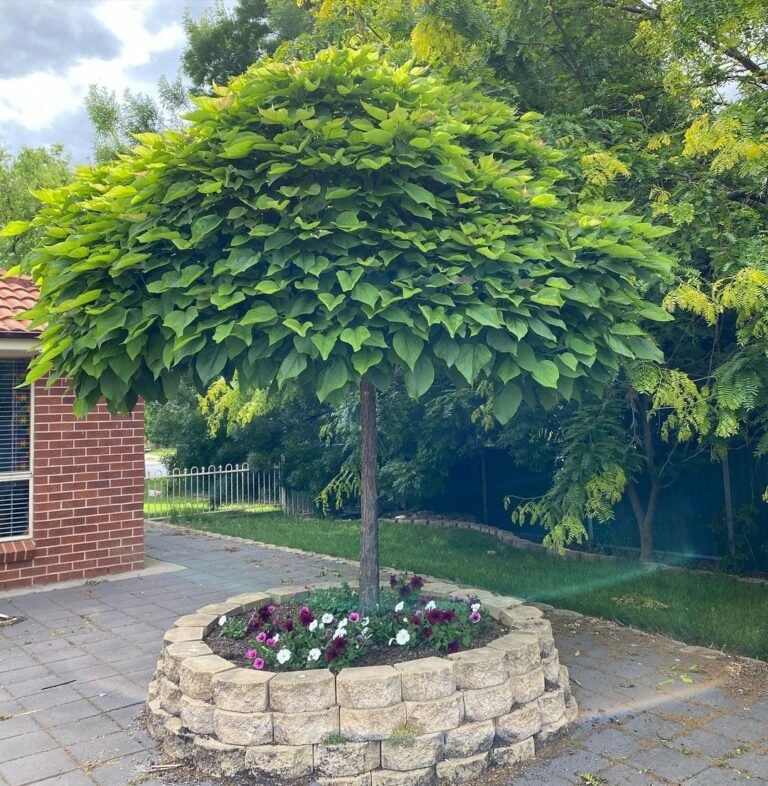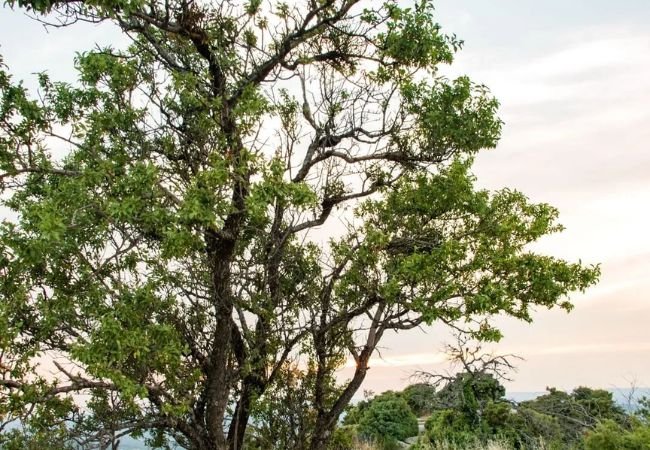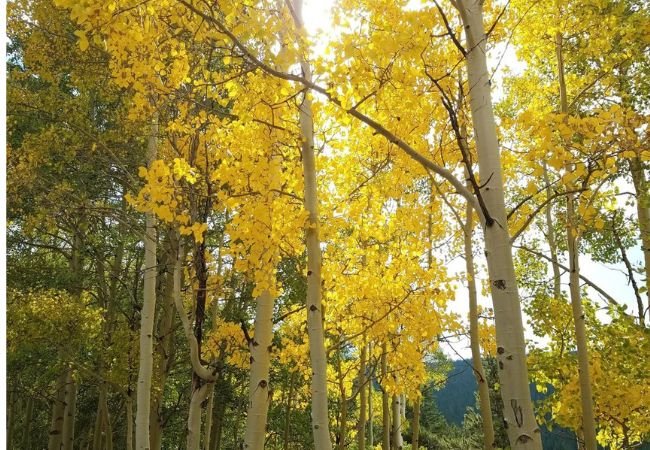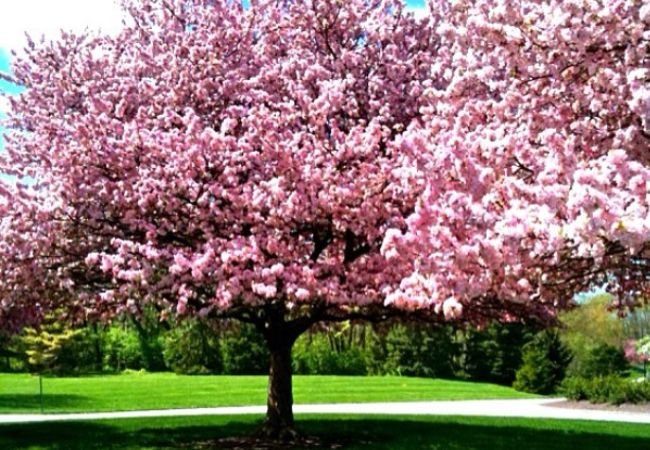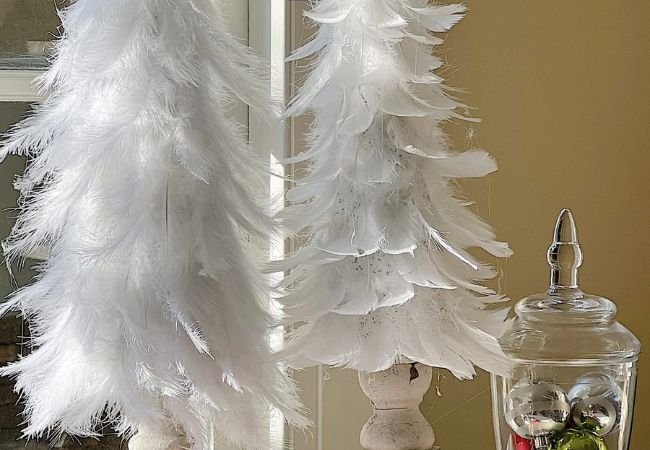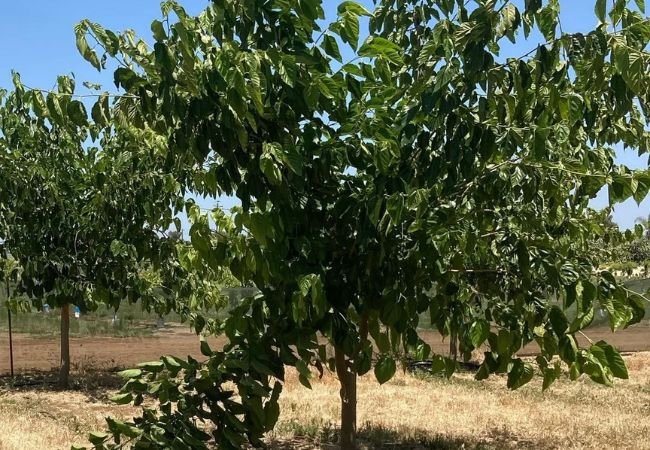Nature’s Beauty: Trees That Start with ‘C’
Delve into nature’s beauty with our exploration of Trees that start with ‘C’. Discover a diverse array of species, from towering conifers to delicate cherry blossoms and uncover the allure of these botanical wonders.
Trees are amazing. They give us clean air, shade and beauty. Some have names of trees that start with the letter ‘C’. Let’s explore these special trees together.
1. Cedar
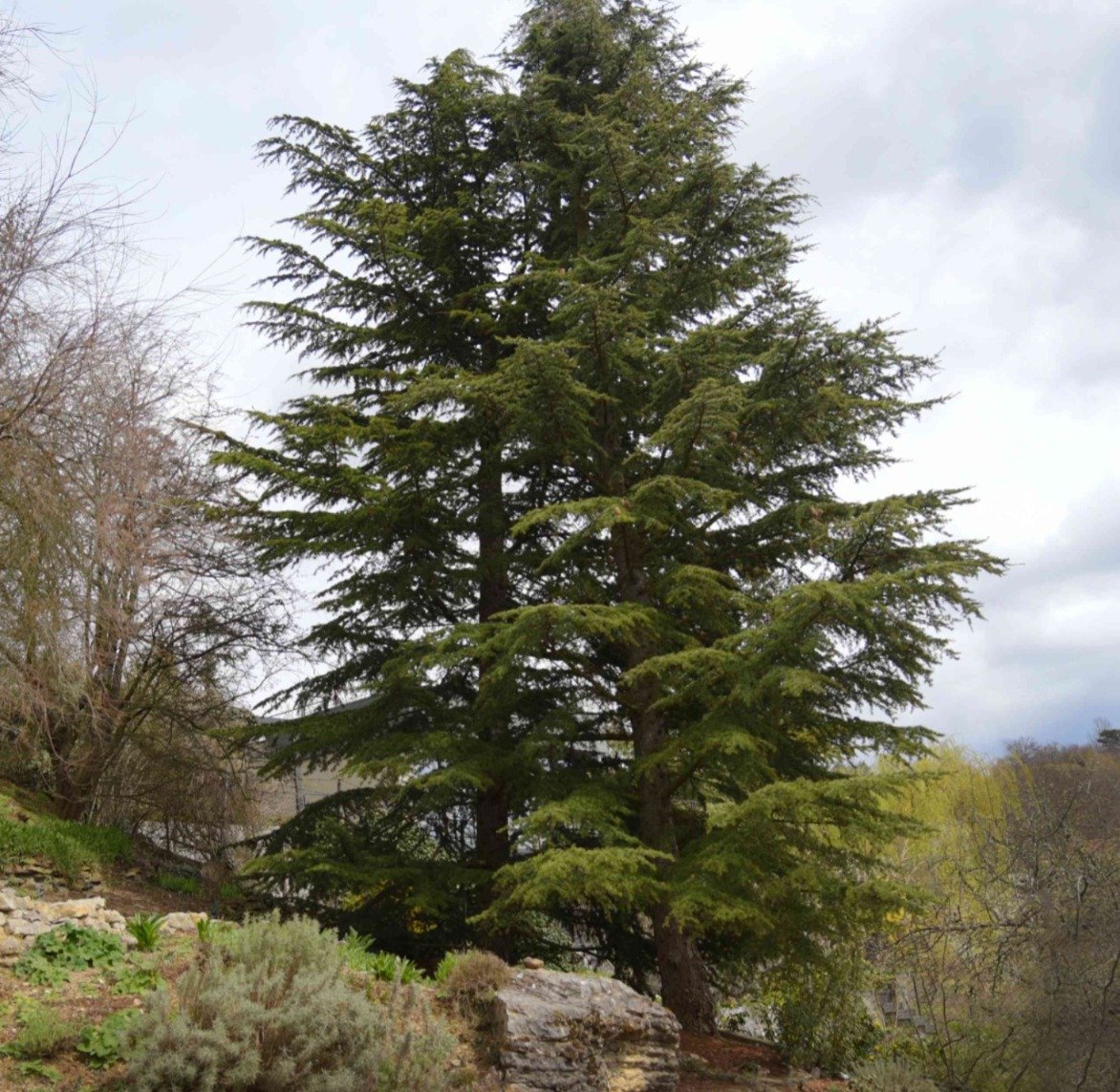
Here’s a short information chart about Cedar trees:
| Aspect | Details |
|---|---|
| Botanical Name | Cedrus spp. |
| Common Name | Cedar |
| Plant Type | Evergreen tree |
| Zones | Varies by species; typically 5-9 |
| Sun Exposure | Full sun to part shade |
| Soil Type | Well-drained, loamy |
| Watering | Moderate |
| Growth Habit | Conical, pyramidal |
| Height/Spread | 40-80 feet tall, 20-40 feet spread |
| Special Features | Aromatic wood, pest-resistant |
Cedar trees are tall and smell nice. There are many types of cedars. Some grow in cold places, others in warm areas. Cedars are evergreen, which means they stay green all year.
These trees have scaly leaves that look like tiny overlapping plates. Cedar wood is special. It resists rot and insects. People use it to make furniture and build houses. Many animals like to live in cedar trees.
Cedars can live for a very long time. Some are hundreds of years old! They need lots of sun and don’t like wet feet. This means they grow best in soil that drains well.
2. Cherry

Here’s a short information chart about Cherry trees:
| Aspect | Details |
|---|---|
| Botanical Name | Prunus spp. |
| Common Name | Cherry |
| Plant Type | Deciduous tree |
| Zones | Varies by species; typically 5-9 |
| Sun Exposure | Full sun |
| Soil Type | Well-drained, fertile |
| Watering | Regular |
| Growth Habit | Rounded, spreading |
| Height/Spread | 15-30 feet tall, similar spread |
| Special Features | Showy spring blooms, edible fruit |
Cherry trees are famous for their beautiful flowers. In spring, they burst into pink or white blooms. It’s a magical sight! There are two main types of cherry trees: sweet and sour.
Sweet cherry trees give us the cherries we like to eat fresh. Sour cherries are used for pies and jams. Cherry trees don’t grow very tall. This makes them good for gardens.
These trees need full sun to grow well. They also like soil that drains well. Cherry trees are pretty, but they can be tricky to grow. They need special care to stay healthy.
3. Chestnut
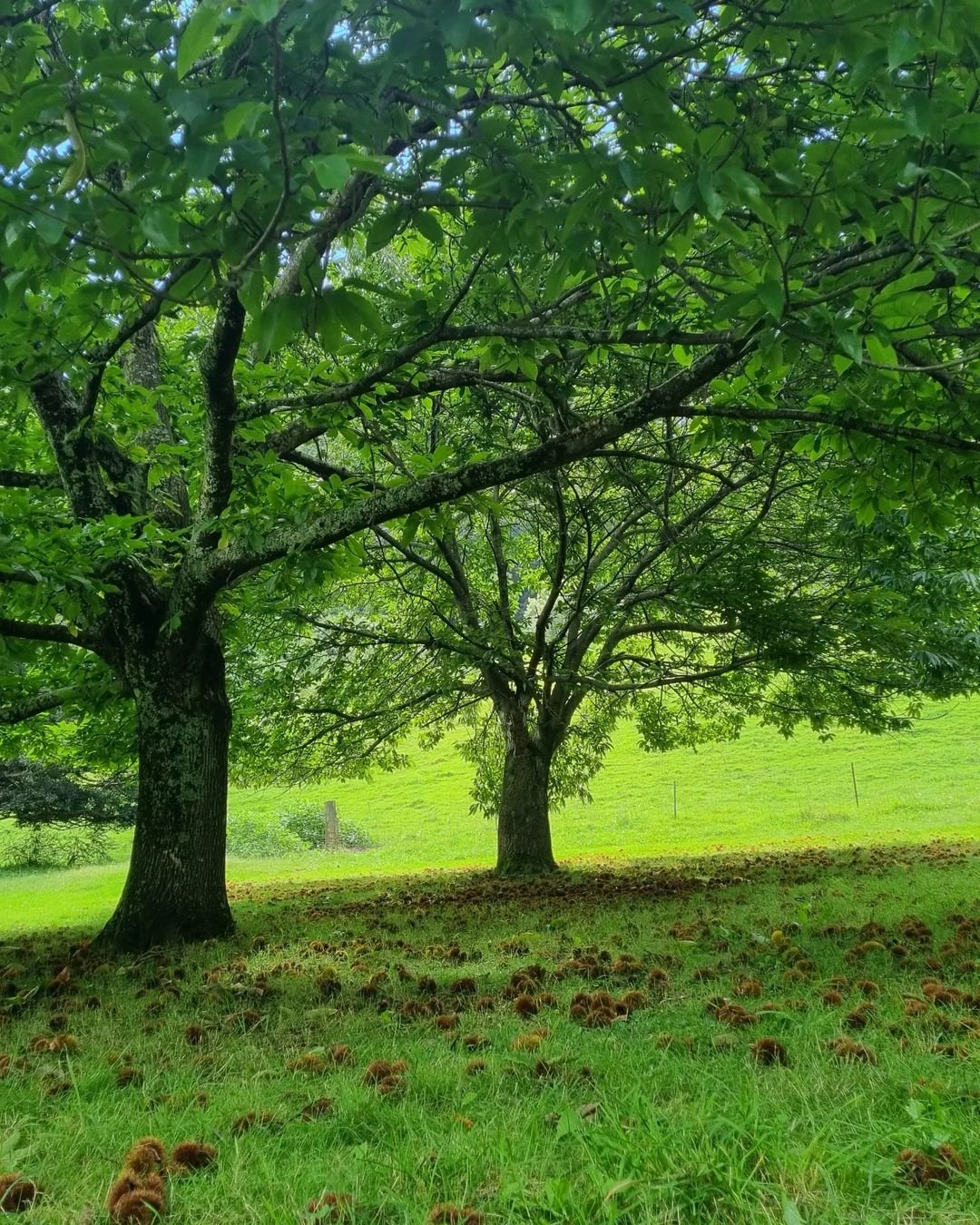
Here’s a short information chart about Chestnut trees:
| Aspect | Details |
|---|---|
| Botanical Name | Castanea spp. |
| Common Name | Chestnut |
| Plant Type | Deciduous tree |
| Zones | Varies by species; typically 4-8 |
| Sun Exposure | Full sun to part shade |
| Soil Type | Well-drained, fertile |
| Watering | Regular |
| Growth Habit | Large, spreading canopy |
| Height/Spread | 50-100 feet tall, 40-70 feet spread |
| Special Features | Edible nuts (chestnuts), ornamental value |
Chestnut trees used to be very common in America. They grew very tall and lived for a long time. Sadly, a disease killed most of them. Now, people are working hard to bring them back.
Chestnuts have long, pointed leaves with jagged edges. In fall, they drop nuts in spiky cases. These nuts are good to eat. Animals like them too. The wood from chestnut trees is strong and doesn’t rot easily.
These trees need lots of sun. They grow best in soil that isn’t too wet or too dry. Chestnut trees can get very big. They need plenty of space to grow.
4. Crabapple
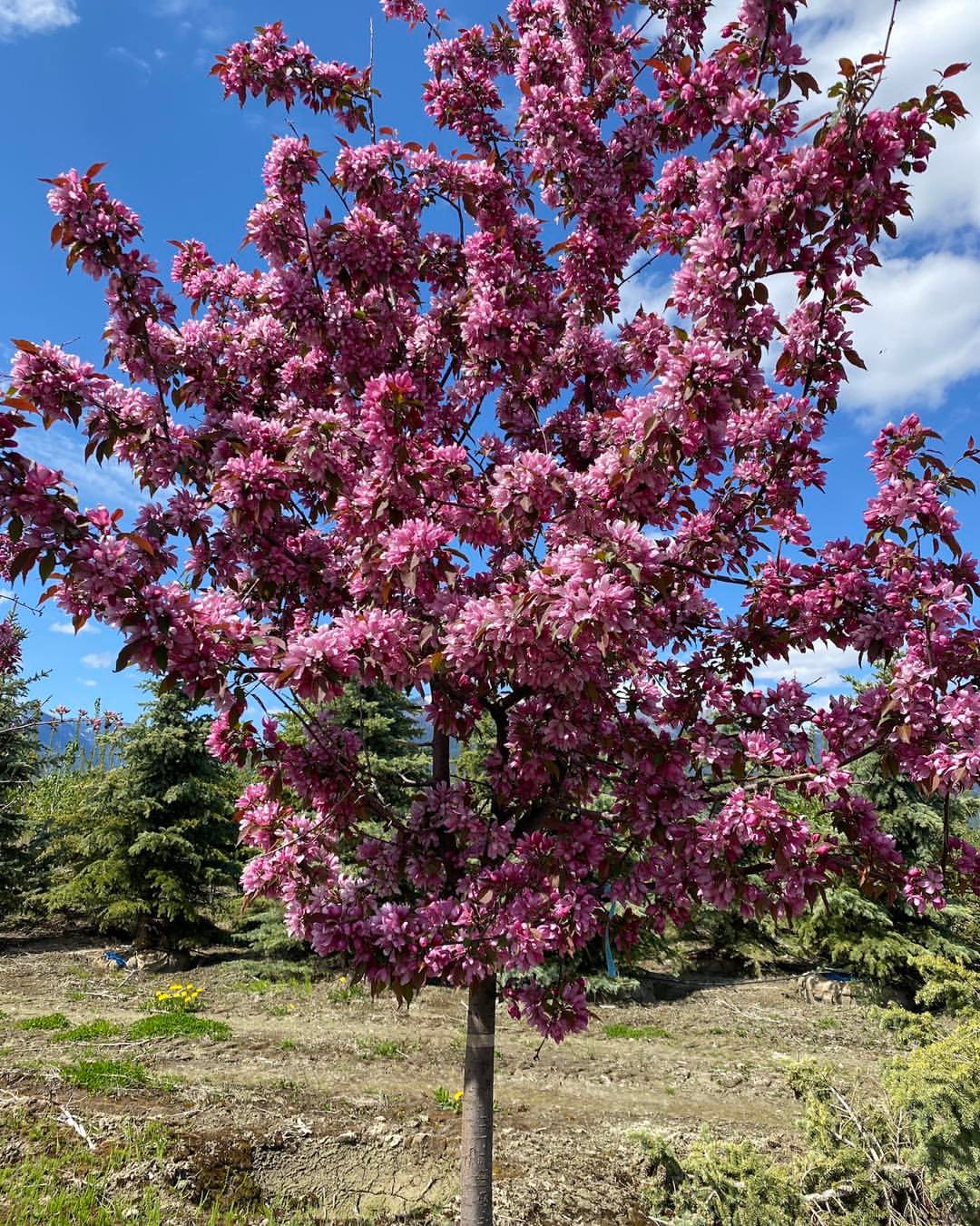
Here’s a short information chart about Crabapple trees:
| Aspect | Details |
|---|---|
| Botanical Name | Malus spp. |
| Common Name | Crabapple |
| Plant Type | Deciduous tree |
| Zones | Varies by species; typically 4-8 |
| Sun Exposure | Full sun to part shade |
| Soil Type | Well-drained, fertile |
| Watering | Regular |
| Growth Habit | Rounded, spreading |
| Height/Spread | 10-30 feet tall, similar spread |
| Special Features | Showy spring blooms, small edible fruit |
Crabapple trees are small and pretty. They bloom in spring with pink, red or white flowers. The blossoms smell sweet and attract bees. In fall, they grow small apples.
These little apples are too sour for most people to eat. But birds love them! Crabapples come in many sizes. Some are as small as shrubs. Others can grow as tall as regular apple trees.
Crabapple trees are tough. They can grow in many types of soil. They need full sun to bloom well. Many people plant crabapples in their yards for their spring flowers and fall fruit.
5. Cypress
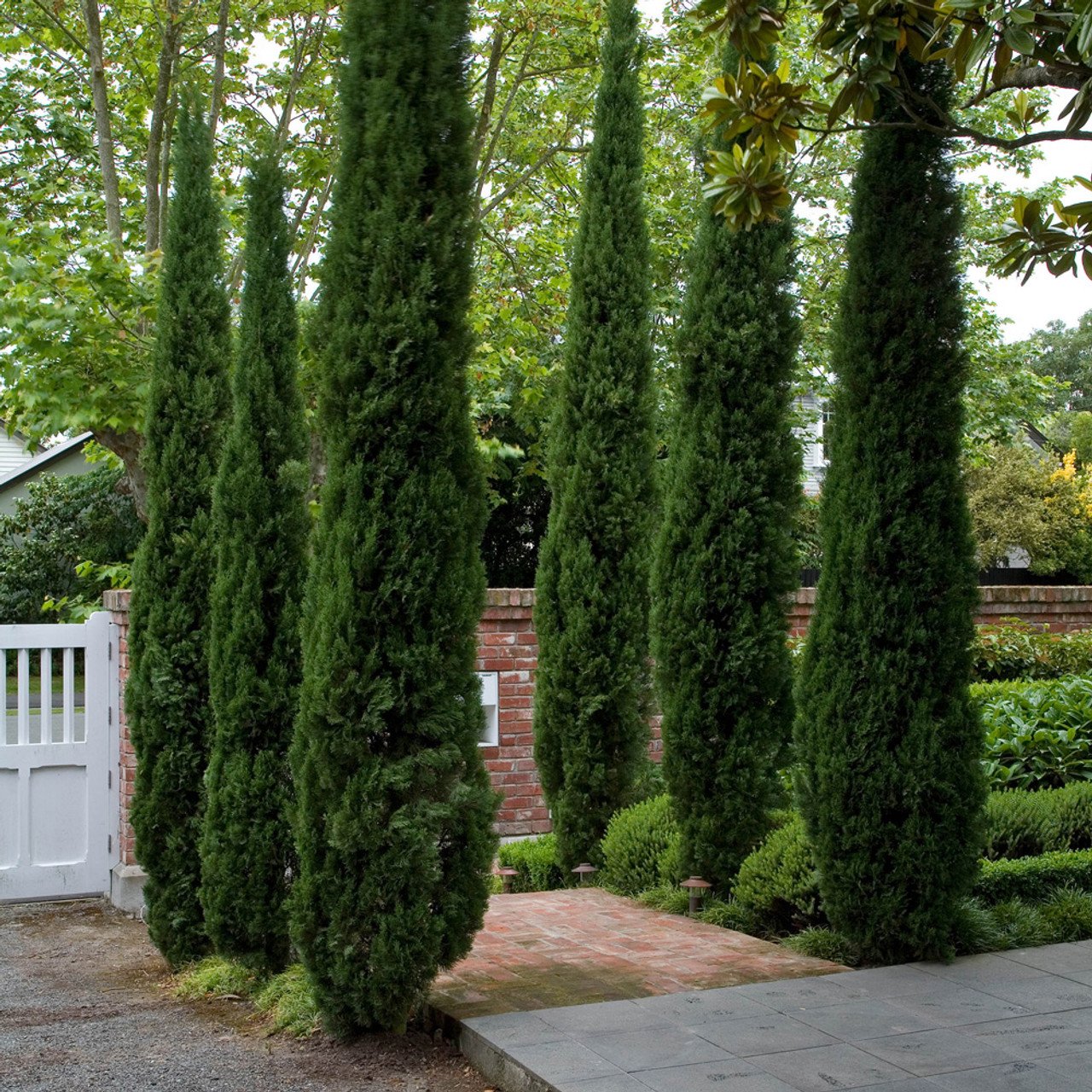
Here’s a short information chart about Cypress trees:
| Aspect | Details |
|---|---|
| Botanical Name | Cupressus spp. |
| Common Name | Cypress |
| Plant Type | Evergreen tree |
| Zones | Varies by species; typically 7-10 |
| Sun Exposure | Full sun |
| Soil Type | Well-drained |
| Watering | Moderate |
| Growth Habit | Columnar, pyramidal |
| Height/Spread | 20-70 feet tall, 10-20 feet spread |
| Special Features | Aromatic foliage, drought tolerant |
Cypress trees like wet places. Some can even grow in water! There are two main types: bald cypress and pond cypress. These trees are special because they can live for a very long time.
Cypress trees have needles like pine trees. But unlike pines, they lose their needles in winter. The wood of cypress trees is very strong. It resists rot, so people use it to build boats and docks.
These trees grow “knees” that stick up out of the ground or water. Scientists think these help the trees breathe. Cypress trees provide homes for many animals, especially in swamps.
6. Cottonwood
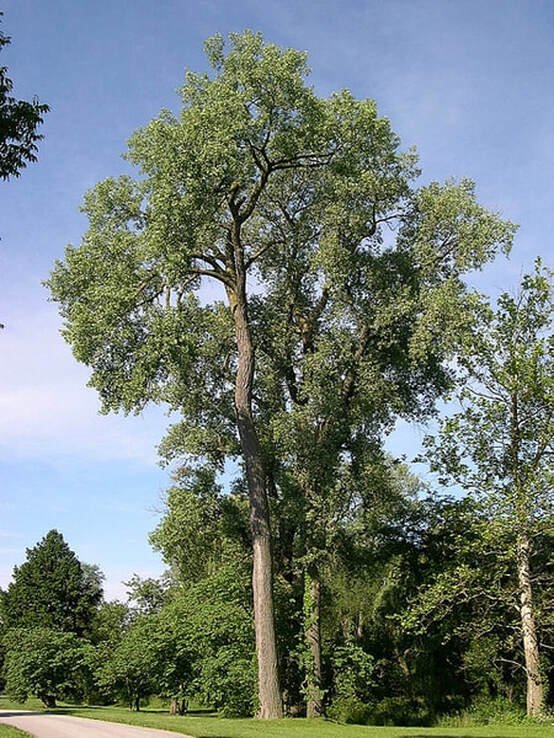
Here’s a short information chart about Cottonwood trees:
| Aspect | Details |
|---|---|
| Botanical Name | Populus spp. |
| Common Name | Cottonwood |
| Plant Type | Deciduous tree |
| Zones | 2-9 |
| Sun Exposure | Full sun |
| Soil Type | Moist to wet |
| Watering | Regular to ample |
| Growth Habit | Tall, fast-growing |
| Height/Spread | 50-100 feet tall, 30-50 feet spread |
| Special Features | Fluffy cotton-like seeds, shade provider |
Cottonwood trees grow fast and get very big. They’re called cottonwoods because their seeds have fluffy white stuff that looks like cotton. This helps the seeds float in the wind.
These trees like to grow near water. They have big, heart-shaped leaves that rustle in the wind. In fall, the leaves turn bright yellow. Cottonwoods provide good shade because they grow so big.
The wood of cottonwood trees is soft. It’s not good for building, but it’s used to make paper and boxes. These trees are important for wildlife. Many birds nest in them.
7. Crape Myrtle
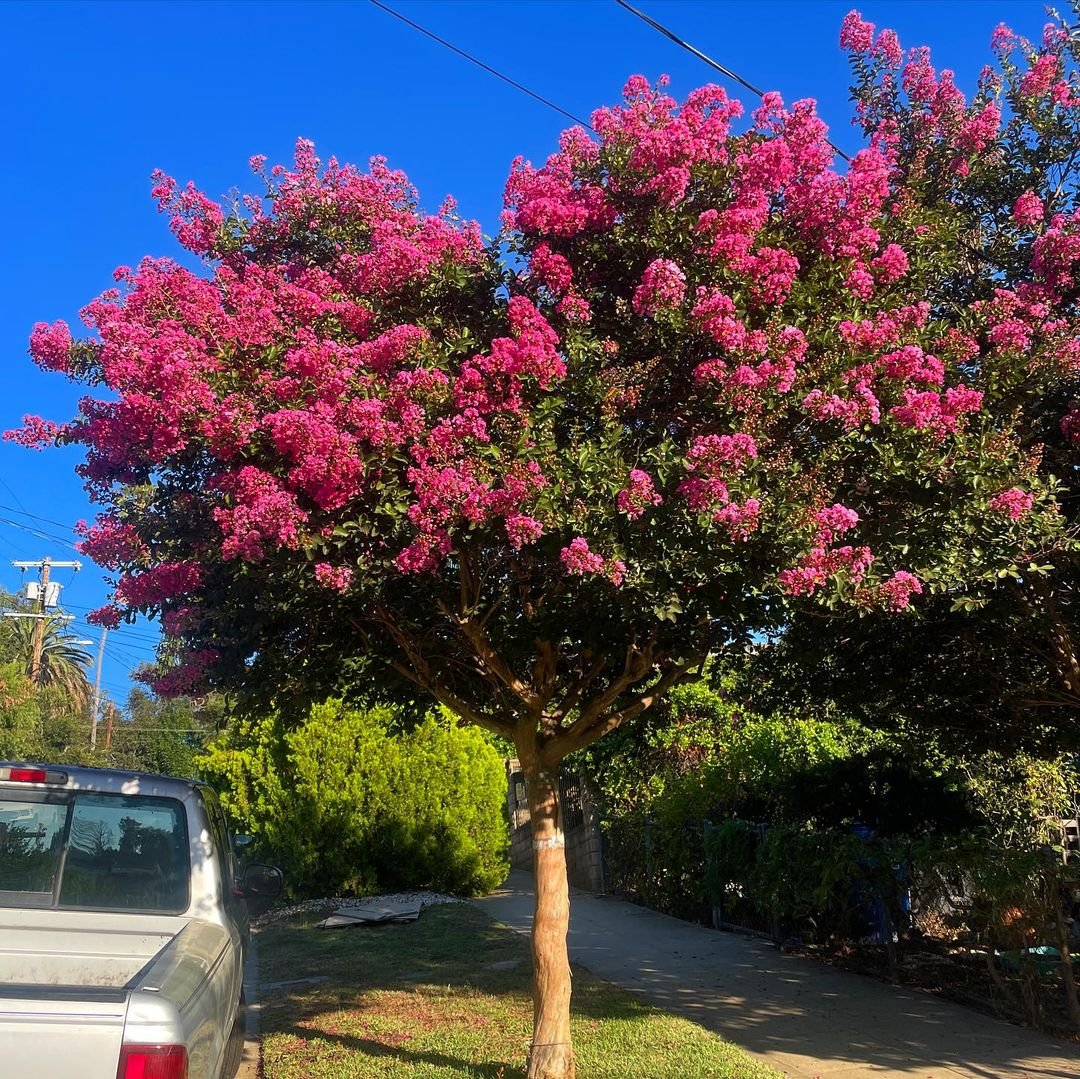
Here’s a short information chart specifically for Crape Myrtle:
| Aspect | Details |
|---|---|
| Botanical Name | Lagerstroemia spp. |
| Common Name | Crape Myrtle |
| Plant Type | Deciduous shrub or small tree |
| Zones | 6-9 (varies by cultivar) |
| Sun Exposure | Full sun |
| Soil Type | Well-drained, fertile |
| Watering | Moderate |
| Growth Habit | Upright, spreading |
| Height/Spread | 6-25 feet tall, 6-15 feet spread |
Crape Myrtles are small trees that bloom all summer. They have lots of pink, purple, red or white flowers. The flowers look crinkly, like crepe paper. That’s how these trees got their name.
These trees are great for gardens. They don’t get too big, and they bloom for a long time. Crape myrtles like hot weather. They grow best in places with warm summers.
The bark of crape myrtles is pretty too. It’s smooth and peels off in patches. This makes the trunk look interesting, especially in winter when the leaves are gone.
8. Catalpa
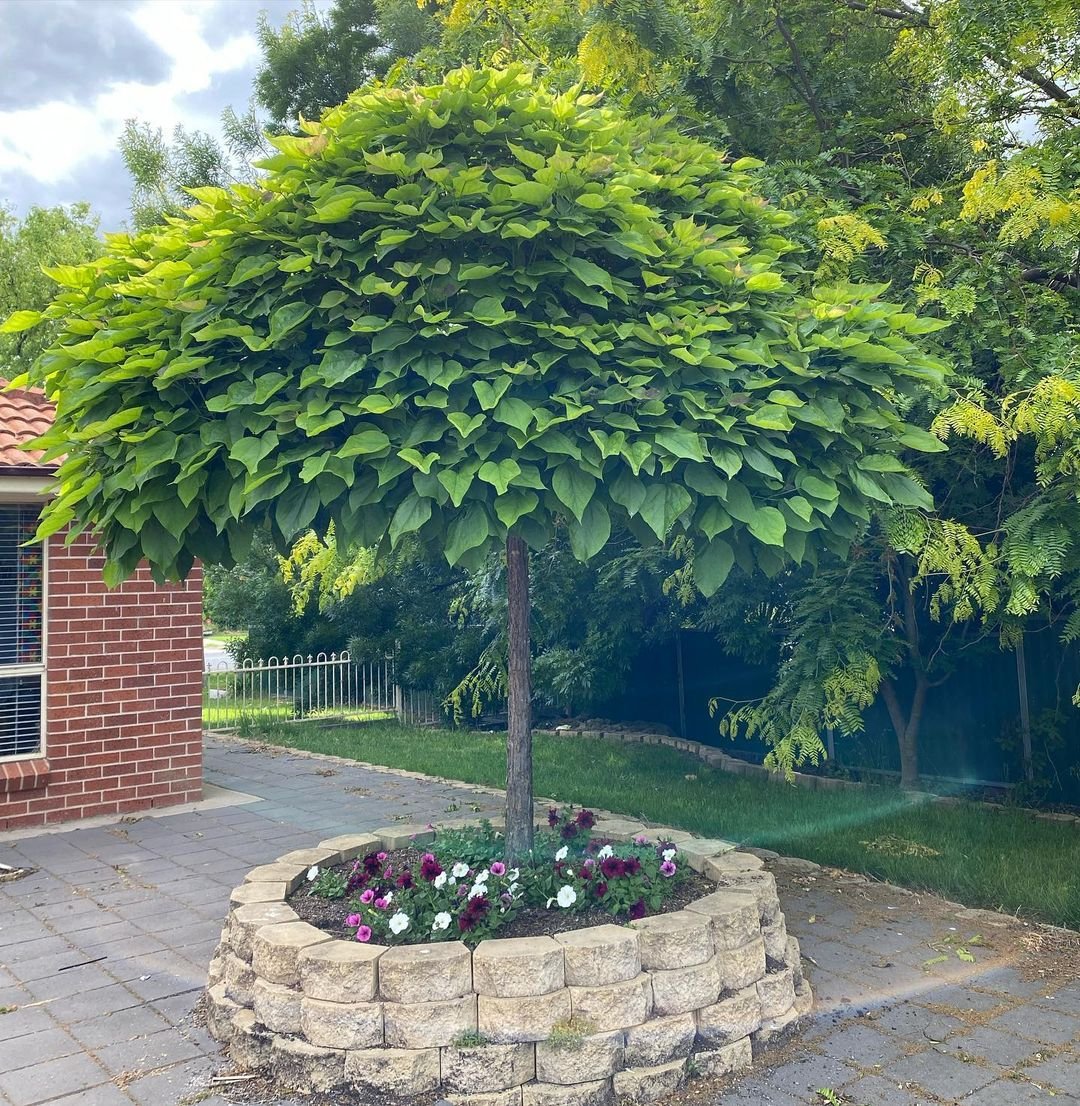
Here’s a short information chart about Catalpa trees:
| Aspect | Details |
|---|---|
| Botanical Name | Catalpa spp. |
| Common Name | Catalpa |
| Plant Type | Deciduous tree |
| Zones | 4-8 |
| Sun Exposure | Full sun to part shade |
| Soil Type | Well-drained, fertile |
| Watering | Regular |
| Growth Habit | Broadly spreading |
| Height/Spread | 40-70 feet tall, 20-50 feet spread |
| Special Features | Showy spring blooms, large heart-shaped leaves |
Catalpa trees are known for their big leaves and long seed pods. The leaves are heart-shaped and can be as big as a plate! The flowers are white and look like orchids.
These trees grow fast and can get quite tall. The seed pods look like long, skinny beans. They hang on the tree all winter. Kids sometimes call catalpa trees “cigar trees” because of these pods.
Catalpa wood is soft but doesn’t rot easily. People used to use it for fence posts. The trees are also important for some butterflies. Catalpa sphinx moths lay their eggs only on these trees.
9. Coast Redwood
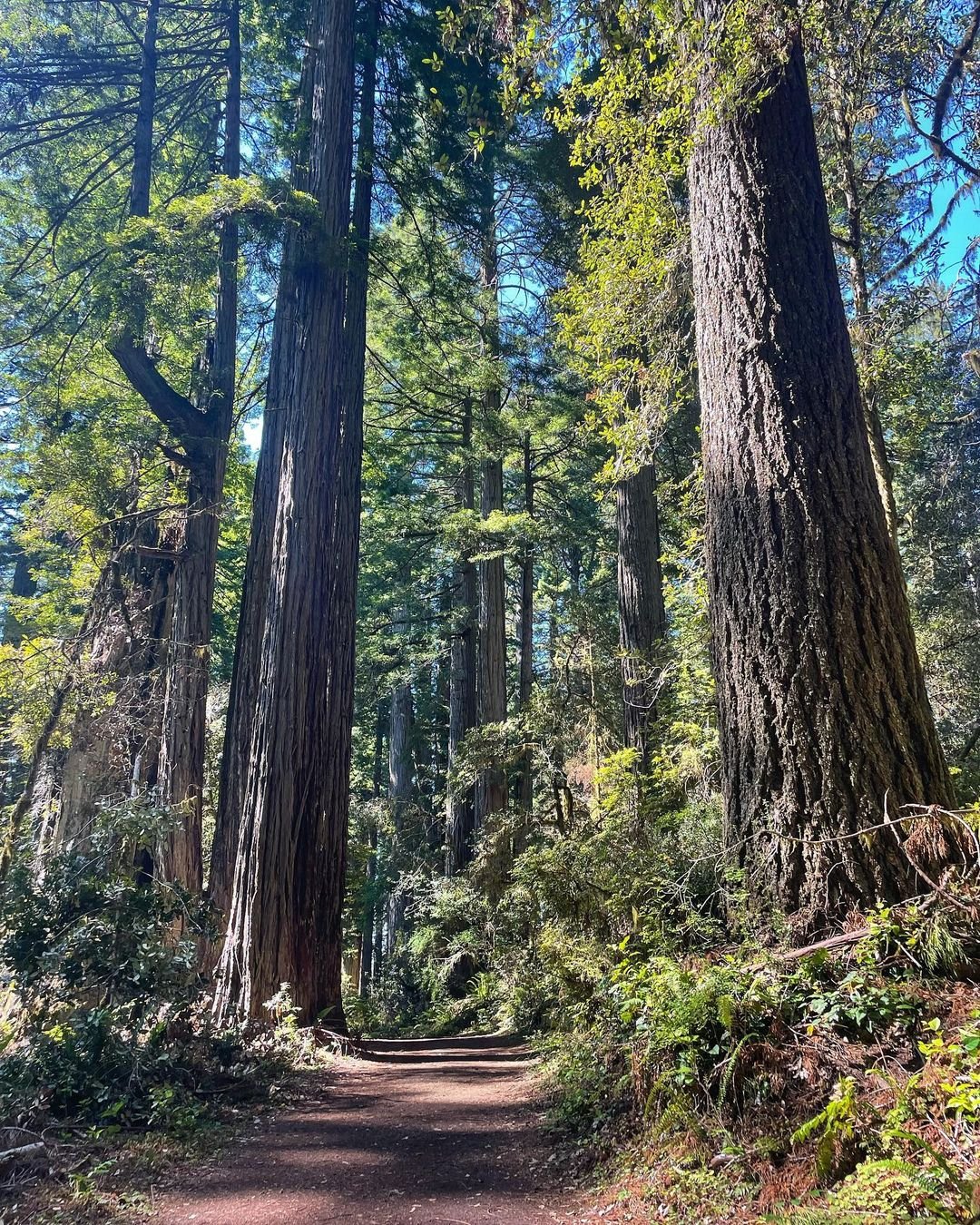
Here’s a short information chart about the Coast Redwood tree:
| Aspect | Details |
|---|---|
| Botanical Name | Sequoia sempervirens |
| Common Name | Coast Redwood |
| Plant Type | Evergreen coniferous tree |
| Zones | 7-9 (typically coastal regions) |
| Sun Exposure | Full sun to part shade |
| Soil Type | Moist, well-drained |
| Watering | Regular |
| Growth Habit | Tall, straight trunk |
| Height/Spread | 200-300 feet tall, 20-30 feet spread |
| Special Features | Fast-growing, dense foliage, iconic in coastal landscapes |
Coast Redwoods are some of the tallest trees in the world. They can grow over 300 feet high! That’s as tall as a 30-story building. These giants grow in California and Oregon.
These trees live for a very long time. Some are over 2,000 years old. Redwoods have thick, spongy bark that protects them from fire. Their wood is naturally resistant to rot and insects.
Coast Redwoods need lots of water. They get some of it from fog. These trees are important homes for many animals. Some birds and animals live their whole lives in the redwood canopy, never coming down to the ground!
10. Chinaberry
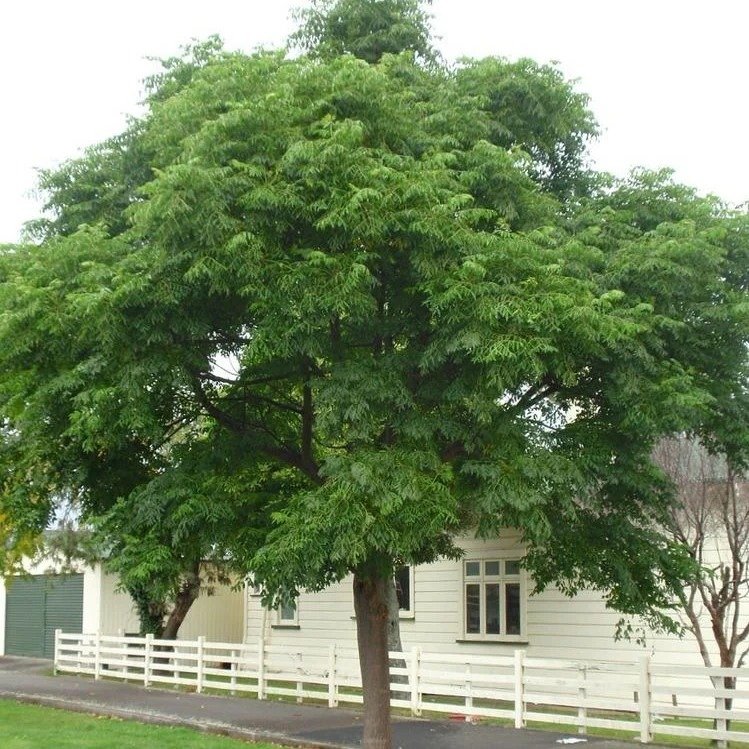
Here’s a short information chart about the Chinaberry tree:
| Aspect | Details |
|---|---|
| Botanical Name | Melia azedarach |
| Common Name | Chinaberry |
| Plant Type | Deciduous tree |
| Zones | 7-10 |
| Sun Exposure | Full sun to part shade |
| Soil Type | Wide range, adaptable |
| Watering | Moderate |
| Growth Habit | Rounded, spreading |
| Height/Spread | 30-50 feet tall, 20-40 feet spread |
| Special Features | Fragrant flowers, small berries, invasive potential |
Chinaberry trees are native to Asia but now grow in many warm parts of the world. They have pretty, purple flowers that smell sweet. The leaves are compound, which means each leaf is made up of many smaller leaflets.
These trees grow quickly and can spread easily. In some places, they’re considered invasive because they take over from native plants. The berries are poisonous to humans but some birds can eat them.
Chinaberry wood is soft but resists rot. People use it to make furniture. In some countries, people plant these trees for shade. The leaves and berries have been used in traditional medicine, but this can be dangerous.
Trees that start with ‘C’ are very different from each other. Some, like the Coast Redwood, are incredibly tall. Others, like the Crabapple, are small and pretty. Each one is special in its own way.
These trees are important for nature. They give homes to animals and birds. Some, like the Cypress, are key parts of their ecosystems. People use many of these trees too. We eat cherries, use cedar wood and enjoy the beauty of crape myrtles.
Learning about trees is fun. It helps us understand nature better. Next time you’re outside, look for trees. You might see one that starts with ‘C’!

